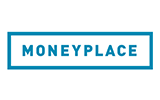What is a home renovation loan?
A home renovation loan is a type of financing you can use to fund upgrades, repairs or extensions to your property.
Instead of being tied to a mortgage, it’s a separate personal loan (usually unsecured) with a fixed or variable interest rate and a set repayment term. You borrow a lump sum and repay it in regular installments.
Because it’s a personal loan, you don’t need to use your home as security (unless you choose a secured option) and the funds can be used for a wide range of renovation purposes. This includes the likes of kitchen remodels and bathroom upgrades to landscaping or structural improvements.
How do renovation loans work?
Here are the nuts and bolts of how renovation loans work:
- Usually taken out as an unsecured personal loan but secured personal finance options are available
- Fixed or variable interest rate loans to choose from
- Borrow up to $50,000 (or $100,000 if it’s a secured loan)
- Loan terms from 1–7 years
- Will often come with fees attached
- May offer access to features, like a redraw facility or the ability to pay off the loan early
Why renovate with a personal loan?
While there are several ways to finance home renovations, here are four reasons Australians choose to use a personal loan:
- No need to refinance your mortgage: A personal loan lets you borrow for renovations without touching your home loan, avoiding the paperwork and potential costs of refinancing. While refinancing can often be straightforward, keeping the renovation loan separate can make it easier to track and manage your debt. And if you’ve already paid off your mortgage, a personal loan may simply be the most practical option.
- Fixed repayment schedule: With a set term and fixed repayments, you know exactly when the loan will be paid off, making budgeting easier. While it’s possible to structure a refinanced mortgage to pay off renovation costs faster, personal loans naturally encourage shorter loan terms (up to seven years).
- Faster access to funds: Personal loans are often approved more quickly than mortgage top-ups, with some lenders offering same-day approval or releasing funds within a few business days. This can help you get your project underway sooner.
- Flexibility in how you spend the money: You can use a personal loan for almost any renovation-related cost – from building materials and trades to appliances and architectural plans – without the strict conditions some mortgage products impose.
Are home renovation loans the best option?
How you fund your home improvements will be entirely up to you, meaning there’s technically no “best” option. It’ll come down to what you’re trying to achieve, the timeframe, how much it’s going to cost, and how quickly you need finance.
If you’re on the fence about a home renovation loan, you may have other options, including:
Using equity in your home to top-up your mortgage
If you’ve built up equity in your property, you may be able to borrow against it by topping up your home loan (known as a home equity loan). This can give you access to a larger amount at a lower interest rate than most personal loans, but it will increase your mortgage balance and could extend the time it takes to pay it off.
Redrawing from additional funds you’ve made into your home loan
If you’ve been making extra payments on top of your minimum repayments, a redraw facility allows you to access those additional funds for renovations. This is usually one of the cheapest financing options, as you’re using money you’ve already paid into your home loan. But, it may reduce the progress you’ve made toward paying off your mortgage sooner.
Refinancing your existing mortgage to a new lender
Switching your home loan to another lender may allow you to unlock equity and secure a lower interest rate at the same time. However, refinancing involves application processes, potential fees, and possibly resetting your loan term to accommodate your increased debt and higher repayments. Talking to a mortgage broker can help you better understand if this option is right for you.
Construction loan
If your renovations are extensive – such as building an extension or undertaking a major structural overhaul – a construction loan might be more suitable. This type of loan releases funds in stages as work is completed, which can help manage cash flow, but it’s generally more complex to set up than a personal loan.
Renovation loan vs home equity vs construction loan
Borrowing limit | |
Home renovation loan | Usually up to $50,000 (higher limits may apply for secured loans) |
Home equity loan | Depends on the borrower’s circumstances (i.e. loan-to-value ratio) |
Construction loan | $150,000+ |
Interest rates | |
Home renovation loan | Starting from around 5% |
Home equity loan | Starting from around 6% |
Construction loan | Starting from around 5% |
Loan term | |
Home renovation loan | Up to 7 years |
Home equity loan | Up to 30 years |
Construction loan | Up to 30 years |
Property valuation required | |
Home renovation loan | No |
Home equity loan | Yes |
Construction loan | Yes |
Lender requires building contract | |
Home renovation loan | No |
Home equity loan | No |
Construction loan | Yes |
Security required | |
Home renovation loan | Optional |
Home equity loan | Yes |
Construction loan | Yes |
| Home renovation loan | Home equity loan | Construction loan | |
|---|---|---|---|
Borrowing limit | Usually up to $50,000 (higher limits may apply for secured loans) | Depends on the borrower’s circumstances (i.e. loan-to-value ratio) | $150,000+ |
Interest rates | Starting from around 5% | Starting from around 6% | Starting from around 5% |
Loan term | Up to 7 years | Up to 30 years | Up to 30 years |
Property valuation required | No | Yes | Yes |
Lender requires building contract | No | No | Yes |
Security required | Optional | Yes | Yes |
Comparison is key to finding a good deal

Phil Collard, Personal Loan & Asset Finance Expert at Money.com.au
“A personal loan can be an effective way to fund renovations, especially if you want fast approval, predictable repayments, and want to avoid refinancing your mortgage. It’s not the only option, and it’s worth comparing all your choices, but for smaller projects where time is of the essence, it can be a smart and convenient solution. Just be sure to check the fees and consider talking to a personal loan broker if you need help finding a suitable deal.”
Phil Collard, Personal Loan & Asset Finance Expert at Money.com.au
Pros and cons of home renovation loans
Pros
- Typically a simple and quick application process
- Unsecured and secured loan options with flexibility to use the funds as you like
- You won’t need a builder’s contract or valuation to get approval
- Can be suited for specific projects, like financing a pool
Cons
- Usually higher interest rates for unsecured loans
- Maximum borrowing amounts may limit you to small renovations
- Application fees and ongoing charges can increase the total loan cost
- Missing repayments can damage your credit score
How to find the best renovation loan
Just like choosing a builder or materials, it’s important to shop around and compare multiple home renovation loans before committing. Here are some key steps to keep in mind:
Compare interest rates
Renovation loan rates currently start from around 5% p.a. But this is the lowest advertised interest rate, meaning for a lot of borrowers, the actual rate will be higher. In fact, Money.com.au data shows that the average personal loan interest rate on a home renovation loan is 7.99% p.a.
Review the fees
Most home improvement loans come with fees, but by shopping around you can minimise them. Some common fees include application, monthly or annual account fees, redraw fees and discharge costs. Don’t forget to check for late payment penalties too.
Calculate the total cost
After comparing rates and fees, use a personal loan calculator to estimate your repayments (weekly, fortnightly, monthly) and the total interest over the loan term. This helps you understand the full cost of your renovation lending.
Consider loan flexibility
Features like redraw facilities, flexible repayment schedules, and the option to repay early without penalties can make a big difference. Also, keep in mind that if your credit score improves later, refinancing your renovation loan to a better rate might be worth exploring.
How much does a home renovation loan cost?
Loan amount | |
Lower rate home reno loan (5.49% p.a.) | $16,783 |
Average rate home reno loan (7.99% p.a.) | $16,783 |
Higher rate home reno loan (10.99% p.a.) | $16,783 |
Monthly repayment | |
Lower rate home reno loan (5.49% p.a.) | $321 |
Average rate home reno loan (7.99% p.a.) | $340 |
Higher rate home reno loan (10.99% p.a.) | $365 |
Total interest paid over loan term | |
Lower rate home reno loan (5.49% p.a.) | $2,447 |
Average rate home reno loan (7.99% p.a.) | $3,630 |
Higher rate home reno loan (10.99% p.a.) | $5,106 |
Total cost of renovation loan | |
Lower rate home reno loan (5.49% p.a.) | $19,230 |
Average rate home reno loan (7.99% p.a.) | $20,413 |
Higher rate home reno loan (10.99% p.a.) | $21,889 |
| Lower rate home reno loan (5.49% p.a.) | Average rate home reno loan (7.99% p.a.) | Higher rate home reno loan (10.99% p.a.) | |
|---|---|---|---|
Loan amount | $16,783 | $16,783 | $16,783 |
Monthly repayment | $321 | $340 | $365 |
Total interest paid over loan term | $2,447 | $3,630 | $5,106 |
Total cost of renovation loan | $19,230 | $20,413 | $21,889 |
As the example above shows, even with the same loan amount, a higher interest rate can add thousands of dollars in extra costs over the life of the loan. While the rate isn’t the only factor to consider – fees, loan term and repayment flexibility also matter – it plays a major role in determining your total cost of borrowing.
Eligibility for home renovation loans
Each lender has its own rules for approving home renovation loans, but most have a similar set of basic requirements. Generally, you’ll need to:
- Be at least 18 years old
- Be an Australian citizen, permanent resident, or hold an acceptable visa
- Have a regular, verifiable income
- Have a fixed residential address in Australia
When assessing your application, lenders will also check that you can afford the repayments. They’ll look at things like:
- Your credit score
- Your income and everyday expenses
- Any existing debts (e.g. credit cards, car loans)
- Assets you own (e.g. a car, savings, shares)
- How many dependents you support
These factors influence not only whether you’re approved but also your interest rate and borrowing limit.
If your credit score is below average, you may need to apply with a lender that offers bad credit personal loans. If so, your rate will likely be higher and there may be risk fees attached.
How to apply for a home renovation loan
You can apply for a home renovation loan online in just a few minutes, or through a broker who can compare lenders on your behalf. The process usually works like this:
- Compare loan options either by yourself or via a personal finance broker who has access to a panel of lenders.
- Make an application with your chosen lender and provide all of your supporting documents (i.e. payslips and bank statements).
- If it’s a secured loan, you’ll need to supply information about the asset being used as security.
- If approved, your lender or broker will contact you with the details.
- The lender will transfer the money directly to your nominated bank account.
The entire process can take as little as two to three business days, although it may be longer for self-employed borrowers or business owners. If this applies to you, a low doc personal loan might be worth considering.
Get your personalised home reno loan rates
See what renovation loan rates you actually qualify for by comparing multiple lenders at once.



















